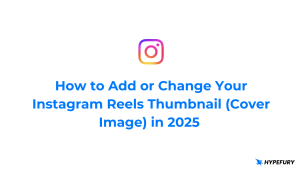The basics
A content scheduling plan is when you write down a detailed plan for your content ahead of time. It helps you stay on track and make sure that your creativity won’t go to waste!
Here are some reasons to consider scheduling your content:
- Your ideas deserve to be heard even if they pop into your brain in the middle of the night! If you have a designated place where to put them in those in-between moments, you’re making sure you’re going to use them.
- Having a plan helps you stay consistent. By having content lined up, you’ll accumulate more of it and won’t go run out of it as quickly.
- A plan gives you a rhythm, which will mean that your growth will be accelerated.
- If you notice some of your numbers going down, you can quickly go through your content calendar and pin point exactly what’s not working.
- All the top influencers are leaning heavily on it and it’s working out well for them!
We’re no longer in 2014 – you can’t just post a 20sec hilarious clip on Vine without much thought and expect it to blow up so much that you get invited on Ellen!
You have to be more calculating than that.
But why was it easier then?
The simple answer is that those random videos eventually got oversaturated!
After a while, everyone started making them and over time, they were no longer random and miscalculated, but planned and curated. This shift changed everything.
Today, every content creator has a schedule and the audience knows it, too – clarity is always appreciated.
Some huge creators even go further and ask their audience for video or product ideas to help them make their content. It’s simply a given that every content creator today has a schedule that they’ve curated to pave their way to success.
How do you do it?
No content schedule will be a one-size-fits-all. It will unavoidably be different for different people. If you work better at night, you’ll want to do more filming and creating during that time, and the complete opposite if you’re more of a morning person!
Nevertheless, here are some efficient ways to build a content schedule, tried and tested by top creators
List all your social media info
You need to know what you’re working with, so start by compiling an updated record of these:
- Your outdated profiles;
- Any imposter accounts of you that shouldn’t exist;
- Each social media account you have with the number of followers you are staring with and how many hours you spend on each one;
- Your goals for each account;
- Your target audience, their demographic and personas;
- Your most successful posts;
- If you have a team, then who’s accountable for which account;
- Underwhelming results on posts that deserve more;
- Key metrics for measuring future success on each platform.
Pick your main social network
There’s always going to be a favorite social media network and every brand has one! For Hypefury, it’s obviously Twitter. What’s yours going to be?
And once you’ve picked it…
You’re just in luck!
We just uploaded all of our guides, access them here to come up with strategies for either Twitter, Facebook, Instagram or LinkedIn!
Follow these content rules
As mentioned before, your calendar has to be custom suited to you, but these are a few generic rules to follow:
- One third of your posts must promote your business;
- One third of your posts must share curated content;
- One third of your posts must involve social interaction.
This will help you further divide your content under different headings, which will help organise your planning.
Decide what your social media calendar should include
Again, make it your own, but these are some basics that every calendar should include:
- Platforms (the active ones);
- Date;
- Time (and time zones!);
- Visuals;
- Links (to published posts, assets, etc.);
- Geo targeting (where is your audience from?);
- Platform specific format.
Let’s talk tools
Even for something as simple as a content calendar, there are tools to help you out!
But beware: most of them can be ridiculously expensive and ineffective.
Here’s a list of selected tools you can use for free.
Notion
This tool is effective and free, and although it may look intimidating at first glance, you can easily just hop onto YouTube and learn about it under 5 minutes.
Notion has been used by huge brands as well as small businesses. It micro-organizes all of your tasks and dates for you as well as colour coordinate your information. You can do so much more than just write down dates, such as work as a team and write articles directly within the program.
Google Calendar
This one is simple! It’s installed into every laptop and Microsoft account and doesn’t take a YouTube video to master.
It won’t let you do much more than schedule reminders, add comments and long notes, but for most content calendars, that’s all you really need anyway.
Asana
Although not as famous as the others, Asana is efficient. It is quite literally a calendar template for your content.
Since this one is laser focused on being a content calendar, it has more features to help you focus on what to post and when to post it. Asana also comes out with many articles to help out your content if it has taken a hit.
If you’re new to the game, Asana is the perfect framework to get started with.
Airtable
If you’re someone who prefers visuals to grab your attention, Airtable is the platform for you. It gets the basic job done while looking professional and organized.
Their customer service is incredible and many influencers, brands, agencies and even media companies recommend them.
How do big creators do it?
While the influencer life may look (and mostly is) filtered, one thing influencers can’t edit is their content calendars. We can clearly see their frequency, uploading rhythm and when their numbers are getting a little low.
Here are a few things that creators do when scheduling content:
They understand social numbers
3K may not be a large number on Instagram, but it is a big one on Twitter! Understanding such differences is crucial to growth. Similarly, if you’re a small creator, 300 followers on Instagram are going to be a much bigger number for you than they would be for someone with 100K followers.
But numbers don’t make your growth – your engagement and insights do. Big creators understand that, so they don’t compare.
They don’t compare one platform to the other – they may leverage one to profit the other, but they never compare.
They don’t compare themselves to larger or smaller creators. Understand the phrase “water your own grass.” Everyone has their own journey and path they take to grow on social media!
They define their goals
Having definitive goals helps you to have a laser-focused mindset. Your goals don’t have to be big at all! Something as small as “gaining 3 new followers this month” or “spending 10 extra minutes to engage on Twitter” will work just as well if not better, since these are more achievable and can encourage you to keep going.
They have a foolproof backup plan
When their numbers start getting low, huge creators often have another plan up their sleeve. They will host giveaways or start a new campaign or hop on a new trend, for instance. However, even this backup is well curated to fit with what’s trending in their niche. It is well planned in advance, too!
You need a plan B, too, so that when all else fails, you can keep going. Your plan needs to be subtle yet effective (although giveaways are usually great and aren’t subtle).
Successful creators often opt for talking about trending topics, which does earn them most of their numbers back.
However, if you really want to come back with a splash, a scandal might help.
Be careful and keep in mind that drama might not be the best for your reputation, but people online seem to forget such things quickly!
How do creators plan their week in one day on Twitter?
Planning your day is easy, but coming up with daily content for a week is tough.
Here are a few steps top creators take:
- Surround yourself with people from your niche. This means following them on Twitter and different platforms so your feed is filled with conversations about your interests or industry which will more than likely inspire you.
- Read articles related to your niche. This will help you come up with longer content such as threads!
- Give yourself enough breaks. It’s important to avoid burn out!
- Go through key words in your niche using advanced search. The tweets that pop up will be related to your niche and you just might get some inspiration!
- Reuse content. Your old content that didn’t get enough traction may do better on round 2!
We promise you, it won’t take as long as you are thinking to plan out your week. You don’t even need new content every day! As stated before, reusing goes a long way!
Which tools will you be opting for to create your social media calendar?
How about using Hypefury to help you schedule your content!






